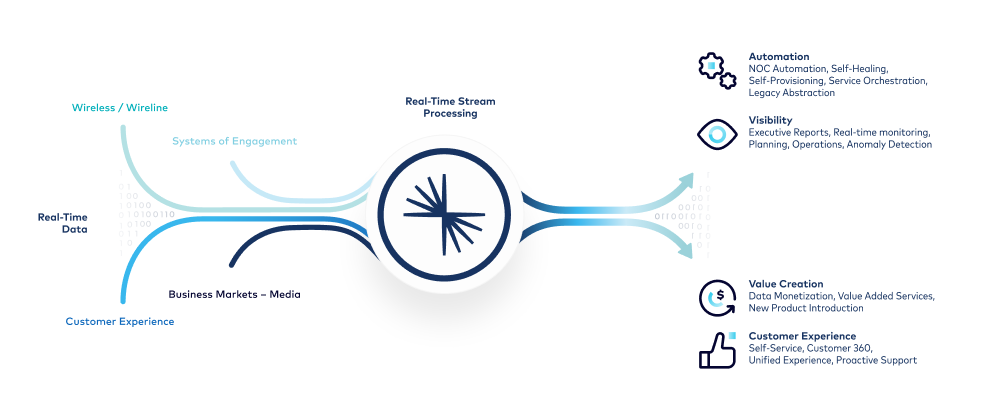[Webinar] Master Apache Kafka Fundamentals with Confluent | Register Now
Autonomous Networks — The Telco and Media Growth Engine
Why are autonomous networks a critical part of all communication service providers’ (CSPs) infrastructure? A recurring issue for CSPs is the integration of legacy operations support services (OSS) systems. In today’s market this is highlighted by the need to drive rich customer experiences. These integrations have to address the complexities of a modern 5G network while also creating an environment that promotes the creation of new services, provisioning, service design, network orchestration, and management of a complex multi-generational environment. It’s the essence of data in motion.
In particular, within the telecommunications market segment, service providers are leveraging their networks as platforms for service transformation. This changes how services are created and provisioned. It will profoundly impact how networks are operated and managed. A critical component of this transformation is a collaboration between new network technologies and legacy OSS systems. These transformational networks will provide an array of software-enhanced capabilities, expanding network functionality and driving customer experience.
To realize the goal of autonomous functionality within the network, an array of technologies such as NFV (network function virtualization), MEC (multi-access edge computing), AI/ML, SDN (software-defined networking), and cloud-native computing have been introduced into the environment. These, coupled with the emergence of 5G networks and the continuing support required for legacy OSS networks, drives the need for autonomous capabilities across domains.
This distinct blending of technologies, combining new and legacy network complexities, requires new approaches and methodologies to network operations. Legacy OSS systems and processes were predominantly designed as siloed software solutions for various individual network domains and required significant manual effort, intervention, and point solutions. Autonomous networks will be critical to making legacy OSS operations lean, and will be an integral and transformational part of infrastructure as we move toward 5G networks.
Benefits of autonomous networks
With a real-time data pipeline for the autonomous network framework, a number of significant architectural benefits begin to emerge. These range from the obvious automation benefits—reducing overhead caused by manual work—to the paradigm-shifting direct and indirect benefits of having access to all data, everywhere, enabling novel and exciting use cases.
Confluent offers several significant enhancements to the ecosystem, including:
- Decoupling different types of applications and producers from consumers using Confluent Schema Registry, enabling faster time to market of new capabilities
- Analyzing and processing real-time data as it flows through Confluent using Flink to build and develop new business insights
- Propagating information across clouds, regions, and data centers with multi-region clusters to build incredibly resilient architectures
- Democratizing and monetizing data between different business units, teams, and organizations using Cluster Linking

Confluent provides a data platform on which engineers and partners can build real-time, interconnected application services, and enable clients and customers to leverage a self-healing, self-service infrastructure that provides higher adaptability and uptime and faster time to value. Confluent enables CSPs to provide the unified, real-time experience for customers and clients that they’re looking for. To read more about autonomous networks and data in motion, download our whitepaper.
Did you like this blog post? Share it now
Subscribe to the Confluent blog
From Reactive to Orchestrated: Building Real-Time Multi-Agent AI With Confluent
Building multi-agent systems at scale requires something most AI platforms overlook: real-time, observable, fault-tolerant communication, and governance. That's why we build on Confluent data streaming platform…
Beyond Boundaries: Leveraging Confluent for Secure Inter-Organizational Data Sharing
Discover how Confluent enables secure inter-organizational data sharing to maximize data value, strengthen partnerships, and meet regulatory requirements in real time.

